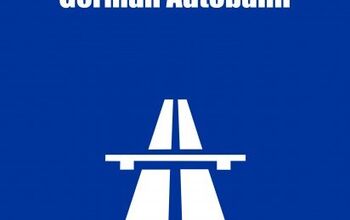German Crash Tests, Part 2

What happens when a Audi Q7 (the SUV that looks like it eats subcompacts for breakfast) crashes with a minuscule Fiat 500? The result is predictable (Audi vs Fiat 10:0), but the reasons are somewhat surprising. German auto club ADAC has been testing the so-called crash-compatibility of cars for 15 years. The Fiat 500 is an up-to-date car, with five Euro-NCAP stars and even equipped with knee airbags. In this 50 percent-offset test, conducted at around 40 mph (56 km/ h, but equivalent to 80km/h for the lower-mass Fiat), the Fiat fares much worse than it would if it just hit a wall. This is because the Audi's longitudinal beam misses the Fiat's frame and bores right into the smaller car's footwell. Subsequently, the Fiat's frame collapses and the driver's overtaxed airbag ruptures. For the Fiat's occupants, such a crash would likely be fatal, while the Audi's passengers would suffer not much more than some bruises. ADAC's Rolf Ambos says this result is quite unnecessary: with cross members and longitudinal beams in similar heights, damage would be much lower. "We at ADAC call for regulations that require larger cars to have energy-absorbing beams on several levels. Most heavy sedans already take compatibility into consideration; SUVs should too." Yet another nail in the SUVs coffin?

More by Martin Schwoerer

































Comments
Join the conversation
LC: Regarding the Never-Gonna-Happen Death Of The SUV: I can only find one point to dispute, but it's a doozy. "However, the truth is that overall, SUV’s save more lives than they cost." That's...quite an ambitious statement, don't you think? You'll forgive me if I don't quite bank on that statement until the IIHS makes it; I have a hard time accepting that risk compensation, crash incompatibility, and twenty years of rollover statistics can all be neatly balled up into that statement. However, this one more than made up for it: So, evidentally, if a vehicle is illegally parked, you have no choice but to drive into it at 40 mph. LOL, guess so! Back on topic: there are responsible SUV design practices (like Volvo, who lowered the height of the interior brace of the XC-90's bumper to a more car-friendly height and managed to make it no less capable than other SUVs, without looking noticably more stupid than other Volvos), and there are irresponsible SUV design practices (I believe we've discussed the Dodge Ram). Regulation WON'T solve all the world's problems, but it's something that could help. After several decades of crash incompatibility, I think it's become obvious that most manufacturers won't practice responsible design until they're forced to...any more than they will make bumpers that DON'T cost you $1200 for backing into a signpost at 4 MPH. Nobody's saying Let's Make All Bumpers 12" Off The Ground To Save The Aveos, but for God's sake, maybe we should be doing something OTHER than churning out more Hummers. Actually, the way the market is behaving, maybe this problem will solve itself!
Also: what the heck are Smart Brakes? Nevermind; I can look that up. A more relevant question is this: after the notorious ineffectiveness of AntiLock Brakes in reducing traffic accidents or fatalities, what are your reasons for believing this will have a pronounced effect on auto safety?
We need to subject SUVs to the gas guzzler tax. Make people pay for driving a beast.
JM, First, I think you may have attibuted to me something Lumbergh said. Just to clarify. It was a good point, but I disagree that the driver and district are not negligent if the bus was illegally parked. It is likely the parking spot was illegal due to safety reasons. Second, Smart Brakes may not be the official term, but the technology is already here to stop the car based on external evidence of an impending collision. It's not necessarily a desirable thing, but it's a better idea than crash compatibility which is a poorly thought out panacea being trotted out once again because it appeals to the equality dreamers as well as SUV haters. I am always suspicious as soon as someone puts a qualifier on accident results (or any other stat - "best mileage in class"). Don't quote rollovers, uneven collisions, or any other particular subset. Let's talk about total deaths per mile (or million miles). That's about the only stat that makes sense. When you find an anomaly in that, you can use the subsets to try to find causality. It seems there is evidence that large SUV passengers are favored in accidents with smaller vehicles, but I haven't seen anything to lead me to believe that the total deaths are thus raised. Instead, it seems the total deaths are reduced. We can debate whether that is fair, but I have seen no reliable stat that shows that it's a net killer. Ponytrekker, We already have a gas guzzler tax, it's called the gas tax. Burn more, pay more. If you actually created a gas guzzler tax like those that have been proposed, it would likely result in more gas usage rather than less. The bottom line is that the incentive works contrary to desire because once the tax is paid the owner has no more incentive to drive less, and the new guzzlers are more efficient than the old ones which will now be kept on the road longer. A more effective approach would be to raise the gas tax for everyone. The majority won't like that, so it will no longer pass through congress while anyone is looking.